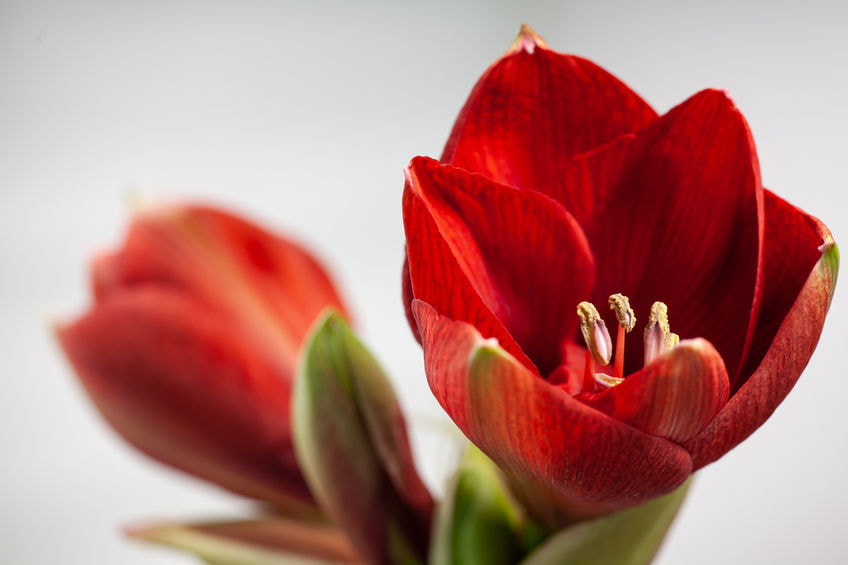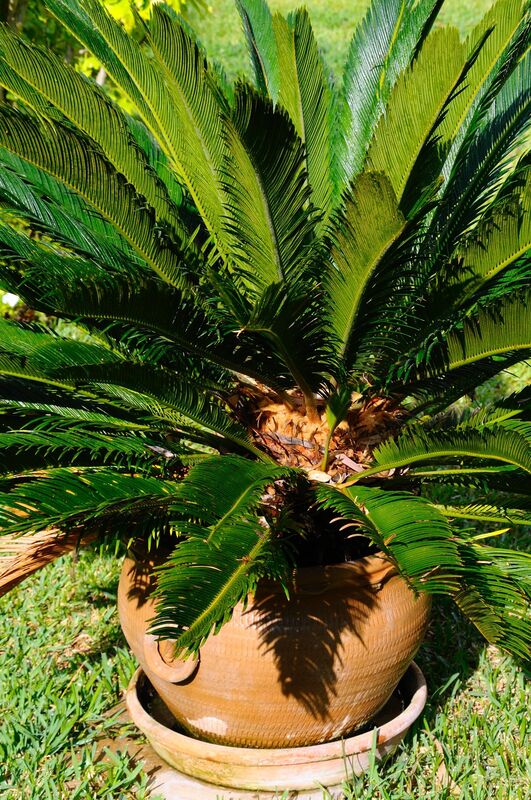This is NOT a complete list of all Toxic plants.
Please do your research before practicing your gardening skills or bringing flowers into the home.
Please do your research before practicing your gardening skills or bringing flowers into the home.
Animal Poison Control Center
(888) 426-4435
Common Toxic Flowers
Azalea- Ingestion of just a few azalea leaves can irritate your dog’s mouth and cause subsequent vomiting and diarrhea. In severe cases, azaleas can cause a drop in blood pressure, coma, and even death in dogs. Deadly.
Daffodil (Narcissus)- All parts of the daffodil plant are considered poisonous, but the daffodil bulb is the most poisonous to dogs. Eating any part of a daffodil can cause vomiting, diarrhea, abdominal pain, arrhythmias, convulsions, and a serious drop in blood pressure. In general, any flower bulb (the part that is planted underground) is poisonous to dogs, so it is best to only bring the cut flowers into your house. Deadly.
Foxglove- These beautiful, tall flowers are paradise for bees and other pollinators but are very dangerous to your pets. Every part of the foxglove plant is toxic to your dog, from the seeds to the leaves, and the flowers. It is best to keep these plants away from your dog. Foxglove can cause cardiac failure and even death. Deadly.
Iris- If your dog eats irises, they may salivate, vomit, drool, have diarrhea, or lose energy. This is because the iris contains several compounds that are toxic to dogs. Irises can also cause skin irritation. Deadly.
Daffodil (Narcissus)- All parts of the daffodil plant are considered poisonous, but the daffodil bulb is the most poisonous to dogs. Eating any part of a daffodil can cause vomiting, diarrhea, abdominal pain, arrhythmias, convulsions, and a serious drop in blood pressure. In general, any flower bulb (the part that is planted underground) is poisonous to dogs, so it is best to only bring the cut flowers into your house. Deadly.
Foxglove- These beautiful, tall flowers are paradise for bees and other pollinators but are very dangerous to your pets. Every part of the foxglove plant is toxic to your dog, from the seeds to the leaves, and the flowers. It is best to keep these plants away from your dog. Foxglove can cause cardiac failure and even death. Deadly.
Iris- If your dog eats irises, they may salivate, vomit, drool, have diarrhea, or lose energy. This is because the iris contains several compounds that are toxic to dogs. Irises can also cause skin irritation. Deadly.
Lily- There are dangerous and benign lilies out there, and it’s important to know the difference. Peace, Peruvian, and Calla lilies contain oxalate crystals that cause minor signs, such as tissue irritation to the mouth, tongue, pharynx, and esophagus – this results in minor drooling. The more dangerous, potentially fatal lilies are true lilies, and these include Tiger, Day, Asiatic, Easter and Japanese Show lilies – all of which are highly toxic to cats! Even small ingestions (such as 2-3 petals or leaves) can result in severe kidney failure. If your cat is seen consuming any part of a lily, bring your cat (and the plant) immediately to a veterinarian for medical care. The sooner you bring in your cat, the better and more efficiently we can treat the poisoning. Deadly (some).
Oleander- Its cardiac glycosides, which often occur as flower and fruit pigments, are very toxic to dogs and can cause fatal heart abnormalities, muscle tremors, incoordination, vomiting, and bloody diarrhea. Deadly.
Mum- Any plant in the chrysanthemum family is toxic for your dog. The plants contain many compounds that are particularly irritating and dangerous to dogs. Common symptoms of mum ingestion include vomiting, diarrhea, drooling, and incoordination. Deadly.
Peony- These beautiful flowering shrubs are often planted in as hardy perennials in backyard gardens. Peonies can cause vomiting, diarrhea, and decreased energy when ingested by your dog. Deadly.
Tulip- Although the entire plant of a tulip is poisonous to dogs, just like with other plants, it is the bulb that is the most poisonous to dogs. Eating this part can cause significant oral irritation, excessive drooling, and nausea. Deadly.
Oleander- Its cardiac glycosides, which often occur as flower and fruit pigments, are very toxic to dogs and can cause fatal heart abnormalities, muscle tremors, incoordination, vomiting, and bloody diarrhea. Deadly.
Mum- Any plant in the chrysanthemum family is toxic for your dog. The plants contain many compounds that are particularly irritating and dangerous to dogs. Common symptoms of mum ingestion include vomiting, diarrhea, drooling, and incoordination. Deadly.
Peony- These beautiful flowering shrubs are often planted in as hardy perennials in backyard gardens. Peonies can cause vomiting, diarrhea, and decreased energy when ingested by your dog. Deadly.
Tulip- Although the entire plant of a tulip is poisonous to dogs, just like with other plants, it is the bulb that is the most poisonous to dogs. Eating this part can cause significant oral irritation, excessive drooling, and nausea. Deadly.
Toxic Christmas Plants
Amaryllis- Although considered toxic to both dogs and cats, the level is mild to moderate. If a pet eats the leaves or stems, it can cause vomiting, hypotension (drop in blood pressure), and respiratory depression. Consumption of the bulb can lead to drooling and abdominal discomfort. The toxin, lycorine, increases the severity to cats. Additionally look out for diarrhea, loss of appetite, depression, and tremors in them. Deadly.
Daffodil (Narcissus)- All parts of the daffodil plant are considered poisonous, but the daffodil bulb is the most poisonous to dogs. Eating any part of a daffodil can cause vomiting, diarrhea, abdominal pain, arrhythmias, convulsions, and a serious drop in blood pressure. In general, any flower bulb (the part that is planted underground) is poisonous to dogs, so it is best to only bring the cut flowers into your house. Deadly.
Mistletoe- Mistletoe poisoning can result in abdominal pain, drooling, vomiting, and diarrhea on the mild side. When larger amounts are ingested, it can cause ataxia (walking drunk-like), hypotension (low blood pressure), abnormal heart rate, collapse, seizures, and death. Deadly.
Holly- Varieties of Hollies include English, Christmas, Japanese, and American. Although some are less toxic than others, it is best to keep pets away from all. The leaves contain potentially toxic substances, and some are sharp and spiny. This can result in drooling, lip smacking, head shaking, vomiting diarrhea, and gastrointestinal injuries. Deadly.
Poinsettia- These plants are known as being toxic though the level of toxicity is mild. Mild signs of vomiting, drooling, or rarely, diarrhea may be seen after ingestion. If the milky sap is exposed to the skin, itchiness, redness, and swelling may develop. Eye exposure can result in mild irritation, though rare. If symptoms are severe or persistent, contact the Poison Control Center or your veterinary clinic.
Daffodil (Narcissus)- All parts of the daffodil plant are considered poisonous, but the daffodil bulb is the most poisonous to dogs. Eating any part of a daffodil can cause vomiting, diarrhea, abdominal pain, arrhythmias, convulsions, and a serious drop in blood pressure. In general, any flower bulb (the part that is planted underground) is poisonous to dogs, so it is best to only bring the cut flowers into your house. Deadly.
Mistletoe- Mistletoe poisoning can result in abdominal pain, drooling, vomiting, and diarrhea on the mild side. When larger amounts are ingested, it can cause ataxia (walking drunk-like), hypotension (low blood pressure), abnormal heart rate, collapse, seizures, and death. Deadly.
Holly- Varieties of Hollies include English, Christmas, Japanese, and American. Although some are less toxic than others, it is best to keep pets away from all. The leaves contain potentially toxic substances, and some are sharp and spiny. This can result in drooling, lip smacking, head shaking, vomiting diarrhea, and gastrointestinal injuries. Deadly.
Poinsettia- These plants are known as being toxic though the level of toxicity is mild. Mild signs of vomiting, drooling, or rarely, diarrhea may be seen after ingestion. If the milky sap is exposed to the skin, itchiness, redness, and swelling may develop. Eye exposure can result in mild irritation, though rare. If symptoms are severe or persistent, contact the Poison Control Center or your veterinary clinic.
Toxic Plants
Aloe Vera- The aloe plant is known for its topical healing properties with burns, muscle aches, and other skin irritations. Found around the home and in gardens, this “healing” plant can cause some major issues for your pet if ingested. Aloin is the toxic agent found within the gooey, yellow substance that’s secreted when the aloe leaves are cut. This toxin can cause vomiting, digestive issues, and can turn your dog’s urine red.
Cardboard Palm- These palms are short and wide with fern-like leaves and a large cone (female) or several smaller cones (males) in the middle. While the entire plant is poisonous, it is the seeds in the cones that are deadly. Deadly.
Dumbcane (Dieffenbachia; Mother-in-Law's Tongue)- A popular houseplant, the dumbcane is poisonous to humans and can be fatal to dogs and cats. All parts of the plant contain calcium oxalate which is toxic when ingested or when the sap is applied to the skin. The plant releases a proteolytic enzyme which increase the severity of the symptoms and aggravates swelling, often cause difficulty in breathing. Signs to look for include drooling, restlessness, and whining and pawing at the face. Deadly.
Sago Palm- The sago palm is an extremely poisonous plant to dogs when ingested, causing bloody vomiting and diarrhea, bleeding disorders, liver failure, and death. This small palm is often kept as a houseplant, making it more likely that your dog’s curiosity will get the best of him. Deadly.
Cardboard Palm- These palms are short and wide with fern-like leaves and a large cone (female) or several smaller cones (males) in the middle. While the entire plant is poisonous, it is the seeds in the cones that are deadly. Deadly.
Dumbcane (Dieffenbachia; Mother-in-Law's Tongue)- A popular houseplant, the dumbcane is poisonous to humans and can be fatal to dogs and cats. All parts of the plant contain calcium oxalate which is toxic when ingested or when the sap is applied to the skin. The plant releases a proteolytic enzyme which increase the severity of the symptoms and aggravates swelling, often cause difficulty in breathing. Signs to look for include drooling, restlessness, and whining and pawing at the face. Deadly.
Sago Palm- The sago palm is an extremely poisonous plant to dogs when ingested, causing bloody vomiting and diarrhea, bleeding disorders, liver failure, and death. This small palm is often kept as a houseplant, making it more likely that your dog’s curiosity will get the best of him. Deadly.
|
Tomatoes-
Although the ripe garden fruit itself can be safe in moderation, the plants are not. Tomatoes are in the Nightshade family and contain tomatine in the stems, leaves, roots, and unripe tomatoes. High concentrations of this glycoalkaloid can cause tomatine poisoning. Symptoms include lethargy and weakness, lack of coordination, drooling, tremors, and an uncontrollable heartbeat. |
ASPCA's Animal Poison Control Center
(888) 426-4435
(888) 426-4435
If you suspect your pet has ingested a hazardous substance, please contact Poison Control IMMEDIATELY.
They will assign you a Case number and direct you to the next steps.
They will assign you a Case number and direct you to the next steps.























